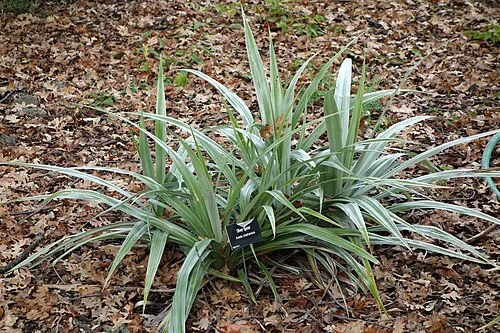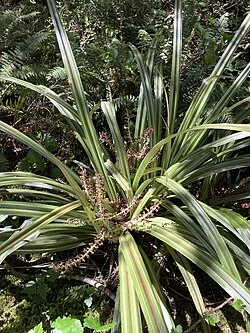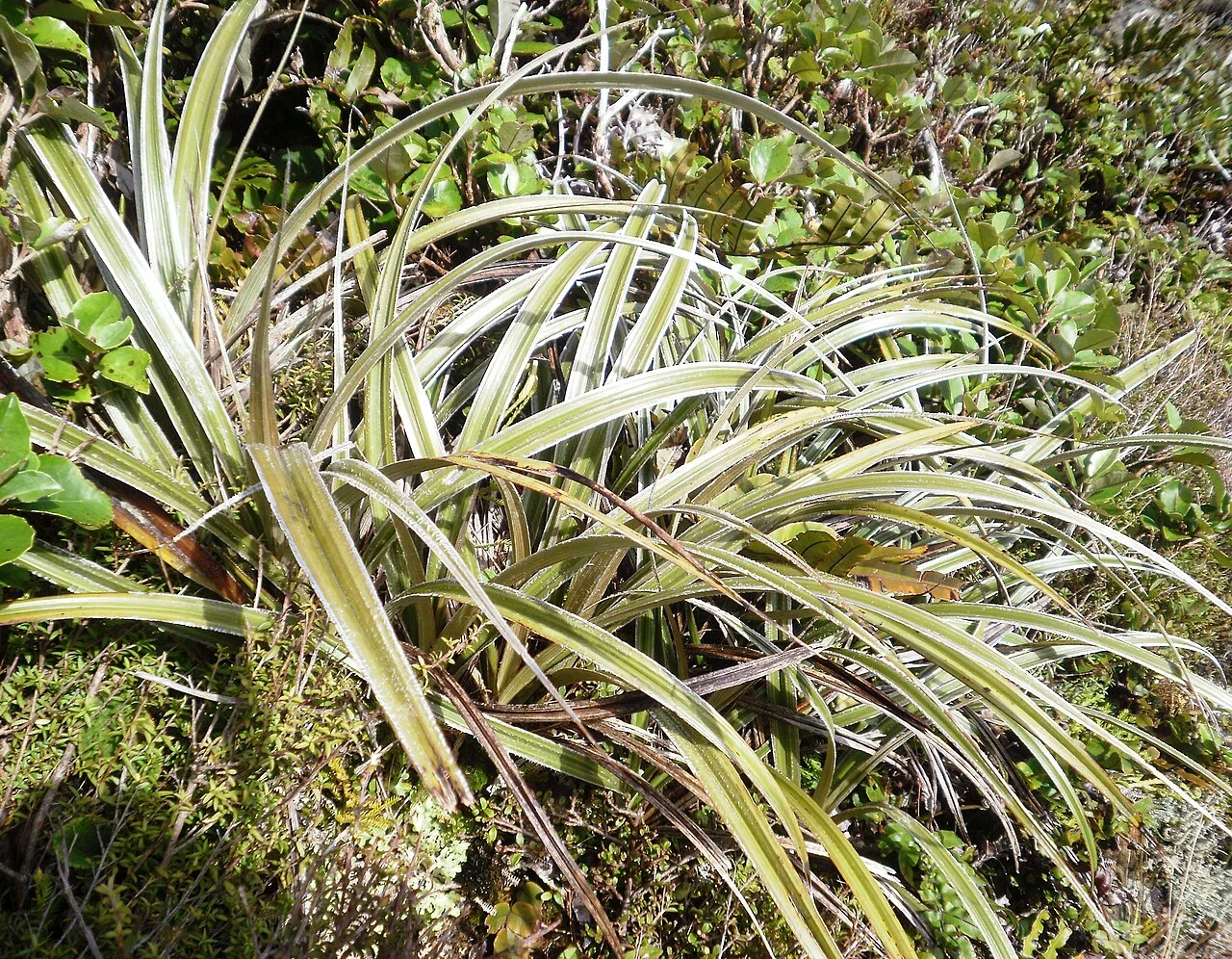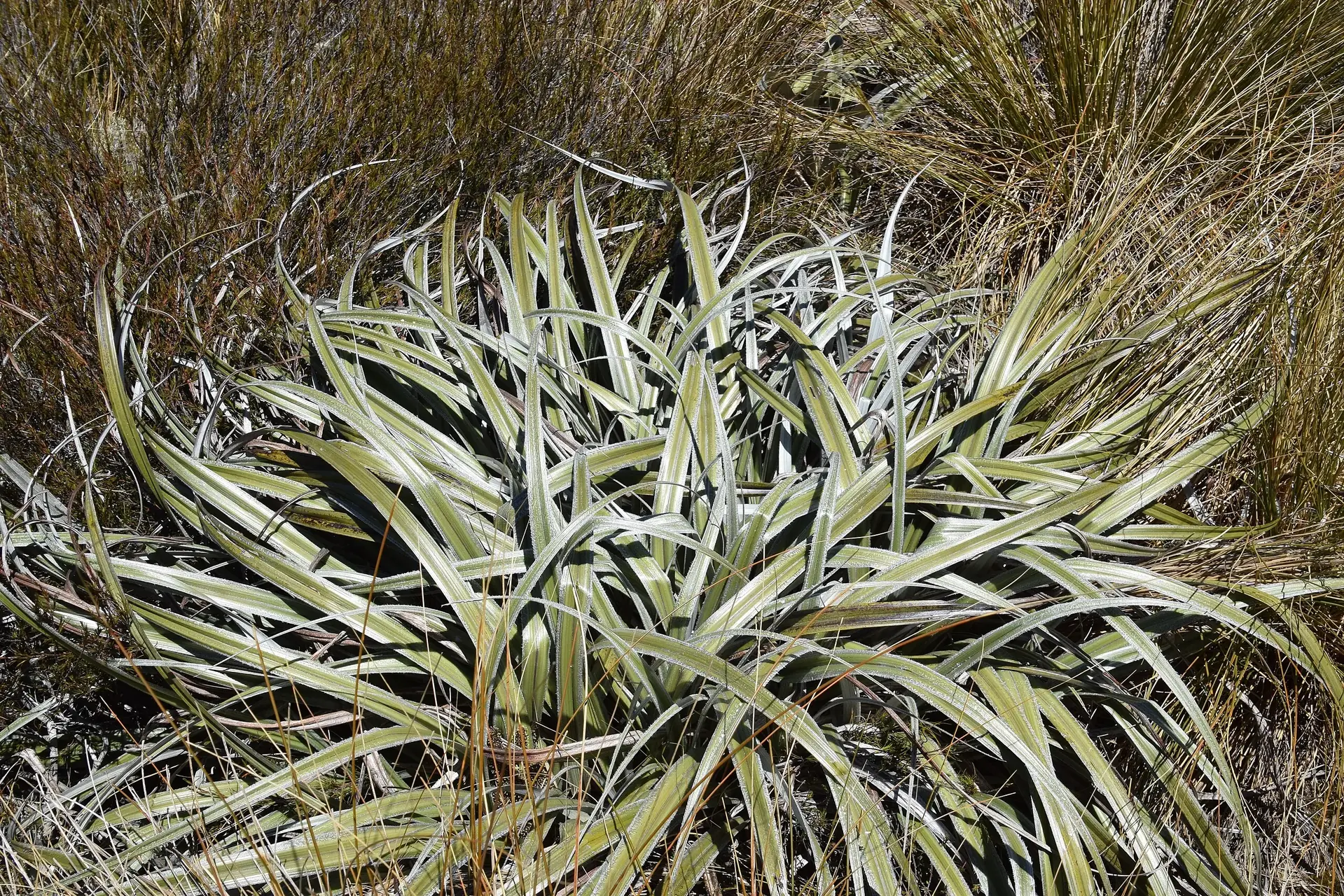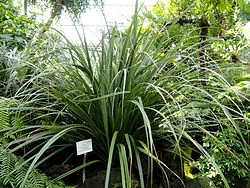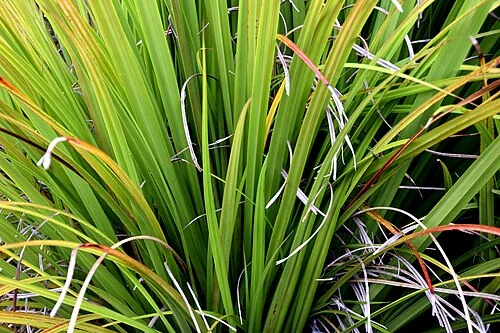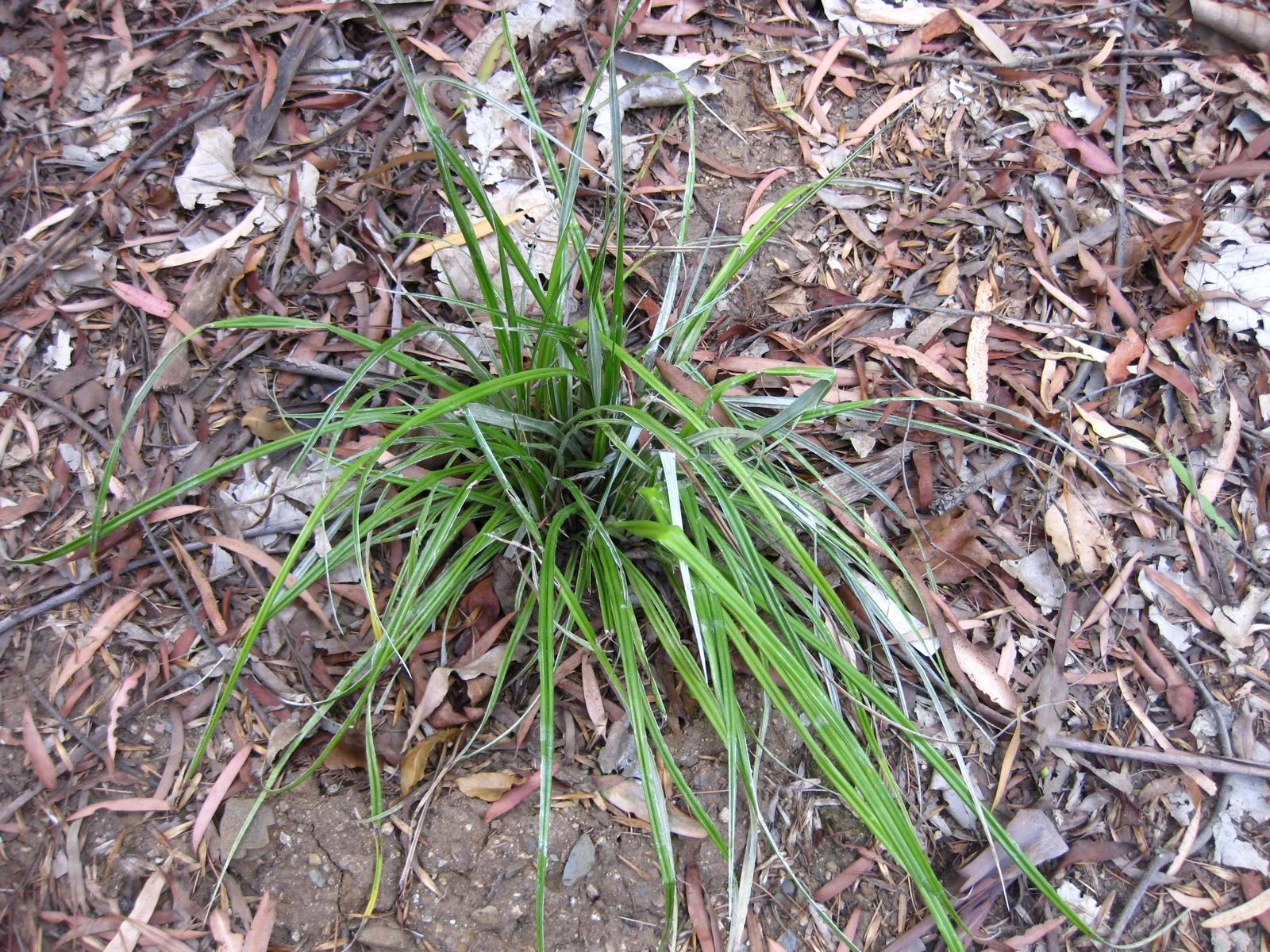
Wharawhara
Astelia banksii
Wharawhara ( Astelia banksii ) is a striking evergreen perennial that forms impressive clumps of silvery-grey, strap-like leaves that arch gracefully from a central crown. This magnificent coastal native demonstrates remarkable architectural qualities, creating dramatic focal points in contemporary landscape design while maintaining the robust characteristics that allow it to thrive in New Zealand's challenging coastal environments. The plant's distinctive silvery appearance, created by fine furry coating on the leaves, reflects its adaptation to sunny, exposed conditions and makes it one of the most sought-after foliage plants in modern New Zealand native gardening .

Plant Description
Astelia banksii (shore/kākaha epiphyte) forms lax rosettes of arching, strap-like leaves, often growing as an epiphyte on tree forks or on coastal rock ledges. Leaves are green to bronze-green with silvery undersides; inconspicuous flowers are followed by orange-red berries attractive to birds.
Quick Facts
| Scientific Name | Astelia Banksii |
|---|---|
| Common Name | Wharawhara, Coastal Astelia |
| Plant Type | Evergreen perennial |
| Height | Up to 1.2 m |
| Spread | Up to 1.2 m |
| Foliage | Silvery-green, strap-like |
| Flowers | Pale green to white (spring) |
| Fruit | Purple-black berries (autumn) |
| Light | Full sun to partial shade |
| Soil | Moist, well-drained, fertile |
| Coastal Tolerance | High |
| Maintenance | Low |
| Propagation | Division, seed, cuttings |
| Family | Asteliaceae |
| Conservation Status | Not Threatened |
| Distribution | North Island (north of Kawhia and Tauranga), West Nelson |
| Habitat | Coastal forests, exposed coastal sites |
| Flowering Time | Spring |
| Fruiting Time | Autumn (purple-black berries) |
| Growth Form | Dense clumping perennial |
| Water Needs | Low - drought tolerant |
| Wind Tolerance | High |
| Frost Tolerance | Moderate - tender to frost |
| Salt Tolerance | High - excellent coastal plant |
| Māori Names | Wharawhara, Kā wharawhara, Horahora, Pāwhara |
| Growth Rate | Moderate |
| Lifespan | Long-lived perennial (20+ years) |
Climate Best Suited to
Mild, frost-free coastal climates with good year-round moisture and humidity. Tolerates salt-laden air but needs shelter from desiccating winds.
Regional Suitability
| City | Climate Suitability |
|---|---|
| Whangārei | Ideal |
| Auckland | Ideal |
| Hamilton | Ideal |
| Tauranga | Ideal |
| Rotorua | Ideal |
| Gisborne | Ideal |
| New Plymouth | Ideal |
| Napier | Ideal |
| Whanganui | Ideal |
| Palmerston North | Ideal |
| Wellington | Ideal |
| Nelson | Ideal |
| Christchurch | Ideal |
| Dunedin | Ideal |
| Invercargill | Ideal |
Natural Habitat
Coastal and lowland forests of the upper North Island, especially kauri forest margins and damp gullies; typically epiphytic or lithophytic in debris-filled forks.
Plant Conservation
Widespread in suitable northern habitats; not considered threatened.
Key threats are loss of mature host trees and browsing that damages crowns. Conservation and restoration plantings should retain canopy structure and provide coarse, organic pockets that mimic natural tree‑fork litter.
How to Grow
Planting Guide
Best Planting Practices
Grow in baskets or pockets filled with coarse bark, composted leaf mould and pumice. Secure the crown above pooling water; irrigate frequently in summer.
Ecological Role
Environmental Benefits
Wharawhara provides important ecological services in coastal environments, supporting diverse wildlife communities through its flowering and fruiting cycles. The spring flowers attract native bees and beneficial insects, while the autumn berries provide valuable food resources for native birds including tūī, bellbirds, and various honeyeater species.
The plant's dense clumping growth provides shelter and nesting opportunities for small birds and ground-dwelling fauna, contributing to habitat complexity in coastal ecosystems. The species also helps stabilize coastal soils through its robust root system, providing erosion control on exposed sites.
In garden settings, Wharawhara supports urban biodiversity by providing nectar and fruit resources that attract native wildlife to cultivated landscapes. The plant's ability to thrive without pesticides or intensive management makes it particularly valuable for creating wildlife-friendly gardens that support conservation goals.
Uses
Outstanding epiphyte for shady courtyards, tree-mounted displays and coastal gardens; berries provide seasonal colour and wildlife value.
Its bold, silvery rosettes make dramatic container specimens in sheltered patios, and fruiting female plants add seasonal colour and bird appeal.
Landscaping Ideas
Combine with kauri grass look-alikes, filmy ferns and Griselinia for a lush coastal forest effect.
Mount divisions into forked logs or large baskets to emulate natural epiphytic displays, and underplant with shade‑tolerant groundcovers to conserve moisture around the roots.
Seasonal Care
Spring
Spring marks the beginning of active growth for Wharawhara, with new leaves emerging from the central crown and flower buds developing. Apply slow-release fertilizer or compost in early spring to support vigorous growth. Remove any winter-damaged foliage and begin regular watering as temperatures warm.
Summer
Summer brings peak growth and the full development of the plant's silvery foliage display. Maintain adequate soil moisture during hot, dry periods, particularly for newly planted specimens. The plant's drought tolerance becomes apparent as established specimens require minimal supplemental irrigation.
Autumn
Autumn flowering occurs on mature plants, followed by the development of attractive berries on female specimens. This is an excellent time for propagation through division or establishment of new plantings. Reduce watering frequency as growth slows and temperatures cool.
Winter
Winter maintenance is minimal, with the plant maintaining its attractive appearance throughout the cooler months. Protect from severe frost in exposed locations, though established plants show good cold tolerance. Avoid overwatering during winter to prevent root rot issues.
Pruning
Pruning Techniques
Remove spent leaves at the base; avoid burying or damaging the central crown.
Divide and refresh congested clumps in late spring as growth resumes, resetting crowns at the original height. Retain a collar of old leaf bases to shelter emerging spears from drying winds and salt‑spray.
How to Grow Wharawhara ( Astelia banksii )
Division
Division is the most straightforward and common method for propagating Astelia banksii . The best time for division is in spring or early summer when new growth is emerging, or during autumn. Carefully dig around the base of the plant to expose the root system. Look for natural points where the clump can be separated. Use a sharp, clean knife or spade to divide the clump into sections, ensuring each section has its own roots and several healthy leaves. Replant each division in a well-prepared, slightly acidic soil amended with compost, and water thoroughly. Divisions can be slow to establish.
Seed Propagation
Astelia banksii can also be grown from seed. Collect the small, black berries from the mature plant in autumn. Extract the seeds from the berries and soak them in water for 24 hours to soften the seed coat. Sow the seeds in a seed tray filled with a peat-based seed-starting mix, keeping the soil consistently moist. Germination can take several weeks to months, requiring patience. Once seedlings have developed a few true leaves, they can be transplanted into individual pots.
Cuttings
Propagation from stem cuttings is another viable method. Take a healthy section of stem with several leaves, removing any bottom leaves. Dip the end of the cutting into rooting hormone. Plant the cutting in a pot with a well-draining soil mix. Keep the soil moist and provide shade.
Pests and Diseases
Common Problems and Solutions
Scale and mealybugs may colonise in dry, stagnant air; rinse foliage and treat with horticultural oil if needed. Crown rot results from poor drainage.
Cultural Significance
Traditional Uses and Values
Astelia banksii , also known as coastal astelia or by its various Māori names such as Wharawhara and k wharawhara, holds significant cultural importance, particularly for the Māori people of New Zealand. Its cultural significance is reflected in several ways: The plant is known by multiple Māori names, including Wharawhara, horahora, kowharawhara, kowarawara, pāwhara, pāwharawhara, and kahakaha. The abundance of Astelia banksii in certain areas even led to place names, such as the town of Kaiwharawhara in Wellington. Māori utilized Astelia banksii for various practical purposes. Its leaves were incorporated with other plants like harakeke (flax), kiekie, and pāngao in plaiting baskets, contributing different hues to the finished products. The soft, shaggy leaf-bases were also reportedly fashioned into mantles. Beyond crafts, the plant provided sustenance, with Māori consuming its berries, and the flowers were used to create face paint. The young, silvery leaves also served as adornments. In ancient Māori beliefs, Astelia banksii , particularly the epiphytic species, was considered the home of fairies. This mythological connection stemmed from its role as an "epicenter for forest life," supporting birds, invertebrates, and other plant species.
Bonus Tip
Expert Growing Advice
To enhance the striking silvery appearance of Wharawhara, plant it in full sun where its unique foliage can shimmer and catch the light. While it tolerates partial shade, optimal coloration and a more compact habit are achieved with ample sunlight. Ensure good air circulation around the plant to maintain its health and prevent any fungal issues, especially in humid coastal environments.
